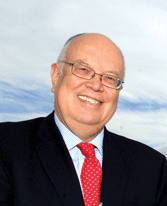Air France-KLM's acquisition of VLM will give it control of over half the slots at London City
Air France-KLM agreed in late December to purchase Belgian regional operator VLM from Panta Holdings for an undisclosed sum. British Airways, which last year said London City would be a "major focus" for it over the next few years, had also been involved in bidding for VLM but was not prepared to pay over the odds for the carrier. BA commercial director Robert Boyle describes missing out as "a lost opportunity" and says BA was "disappointed" at being outbid.
Air France through its Irish subsidiary CityJet holds 24% of the slots at London City, while VLM controls 26.5% and KLM holds 4.6% (see chart). If the takeover deal is approved, Air France-KLM would hold over half the slots at the downtown airport, compared with the 14.2% held by BA CityFlyer. BA retained its London City operation and rebranded it as CityFlyer when it sold BA Connect to Flybe last year. Boyle says BA plans to continue to grow its business at London City. The carrier will this year launch four new services from the airport to Amsterdam, Barcelona, Nice and Warsaw.
 |
|---|
"All the carriers that operate here would be keen to do more, as and when we increase capacity" Richard Gooding Chief executive,London City airport |
The airport, which saw its passenger numbers rise by 23% in 2007 to 2.9 million, is seeking to increase its annual flight movements to 120,000 from the current 80,000, and is building four new aircraft parking stands. Gooding says he expects the application to raise the flight cap to go through in "mid- to late spring", but adds that "we're not expecting that will hold our growth and development plan".
The airport's next step will be to submit in late summer a planning application for its master plan, which includes among other things a proposal for a new taxiway and an expansion of the terminal building. "Right now we have sufficient runway capacity, but as we grow we will need a parallel taxiway to free up the runway for the next movement," says Gooding. "We have no space for a second runway because we are an inner city site, so we have to make maximum use of the existing one."
Takeoff and landing slots at London City are "fairly full at peak times, particularly in the morning", says Gooding. He adds that the off-peak availability is important to cater for leisure passengers, which make up a third of the airport's business. He expects business passengers to continue to account for the majority of London City's business, and says the airport is benefiting from what he calls "Heathrow refugees". These are "business travellers who had got into the habit of using Heathrow but who are coming to us because we're easier".
Air France-KLM is rumoured to have agreed to pay €200 million ($296.7 million) for VLM, which is double the regional carrier's full-year revenue in 2006. VLM's passenger numbers increased by 9% to 745,781 in 2007. It operates a fleet of 18 Fokker 50s and one BAe 146, and serves nine destinations from London City. ABN AMRO analyst Andrew Lobbenberg describes the acquisition as "a strategic consolidation step", adding that "the elimination of competition between VLM and KLM on London City-Amsterdam will be very positive too".
Source: Flight International























